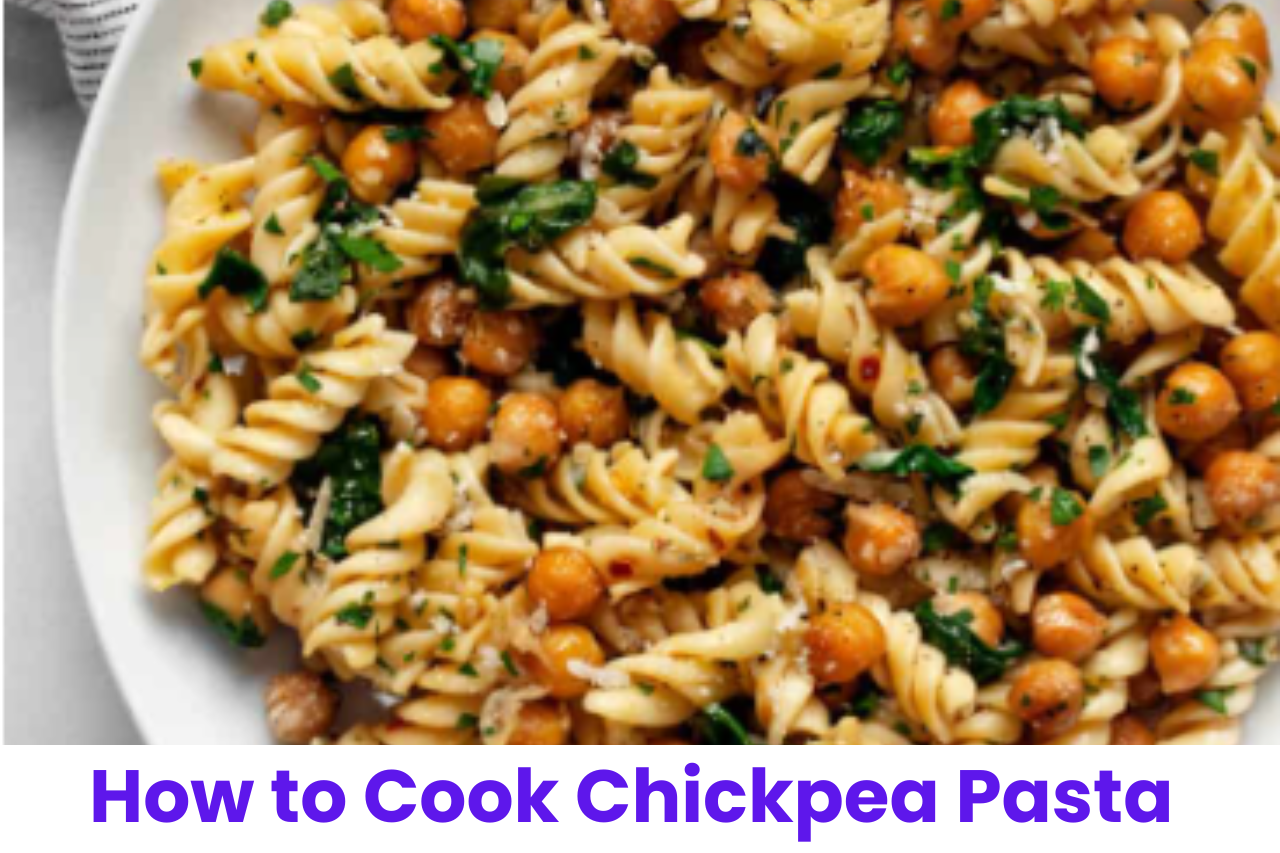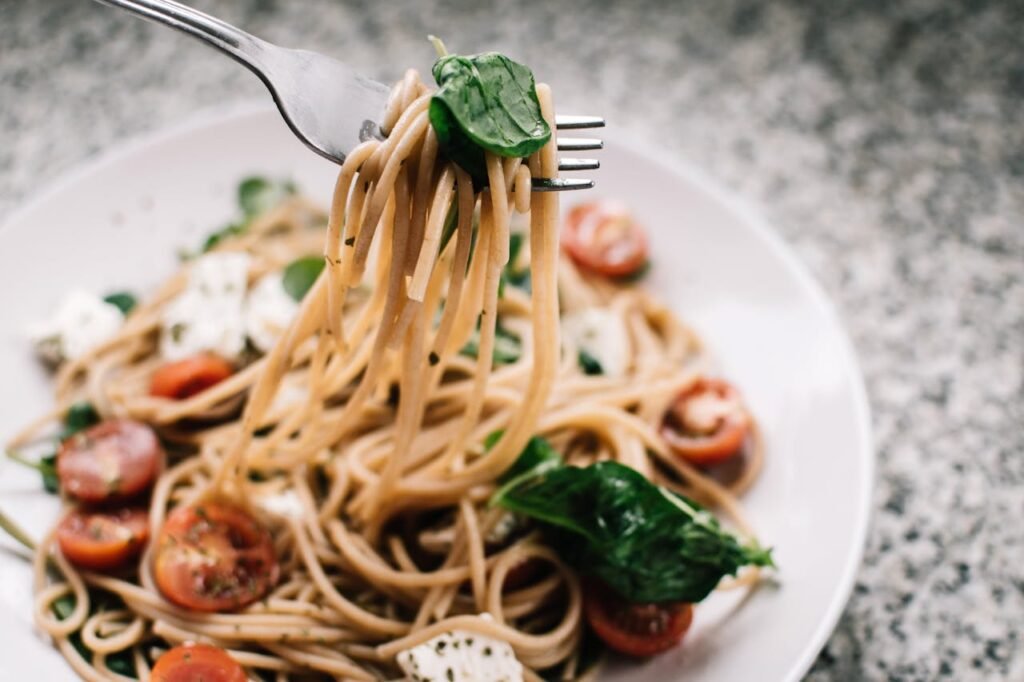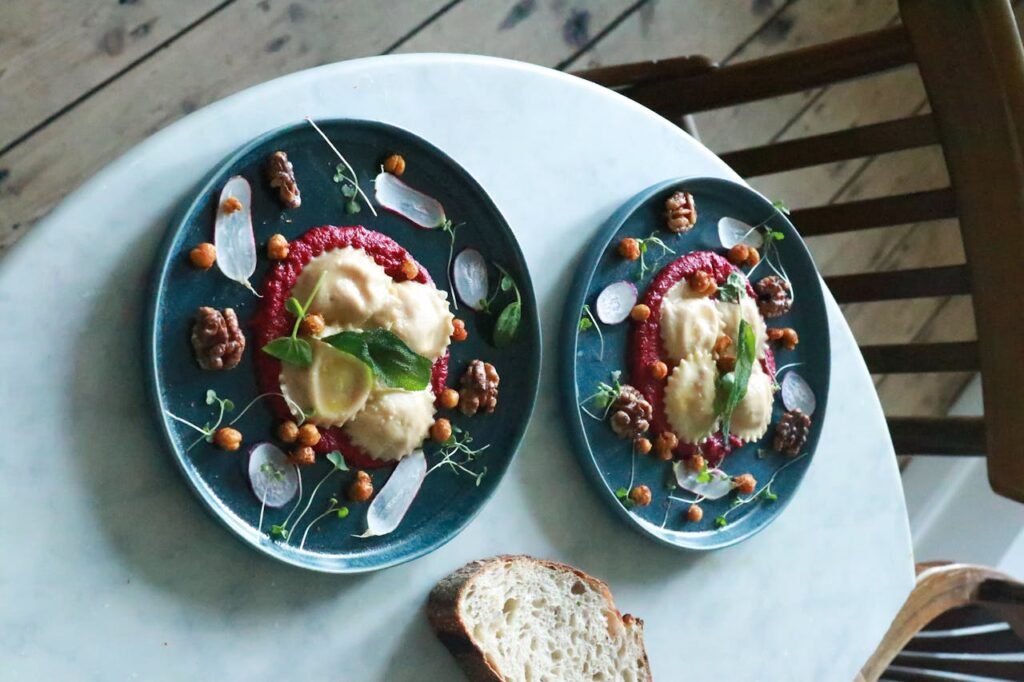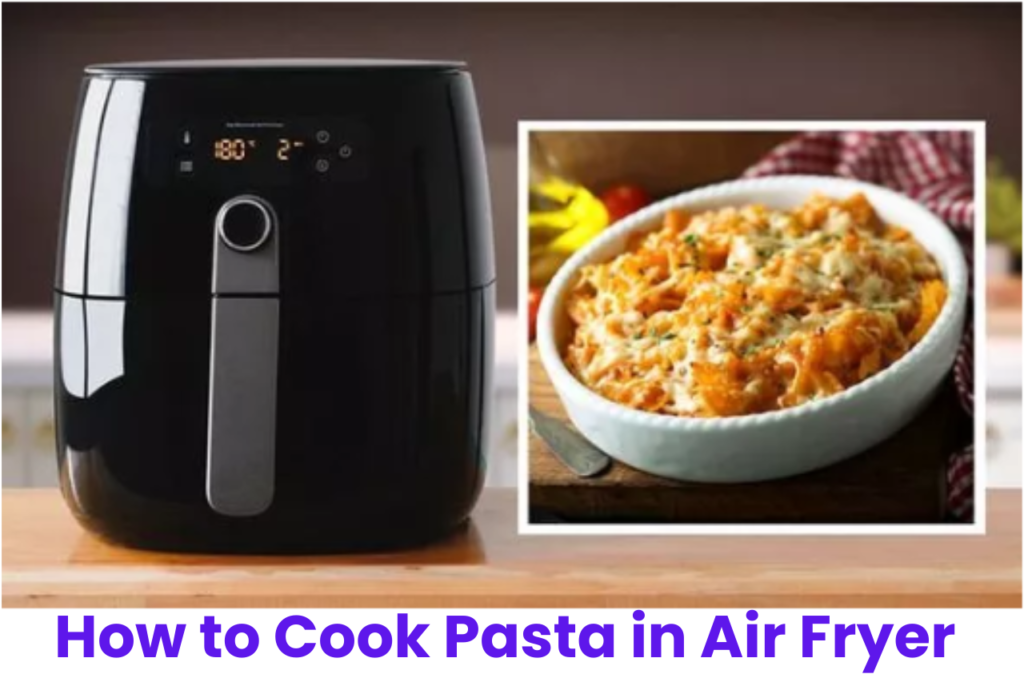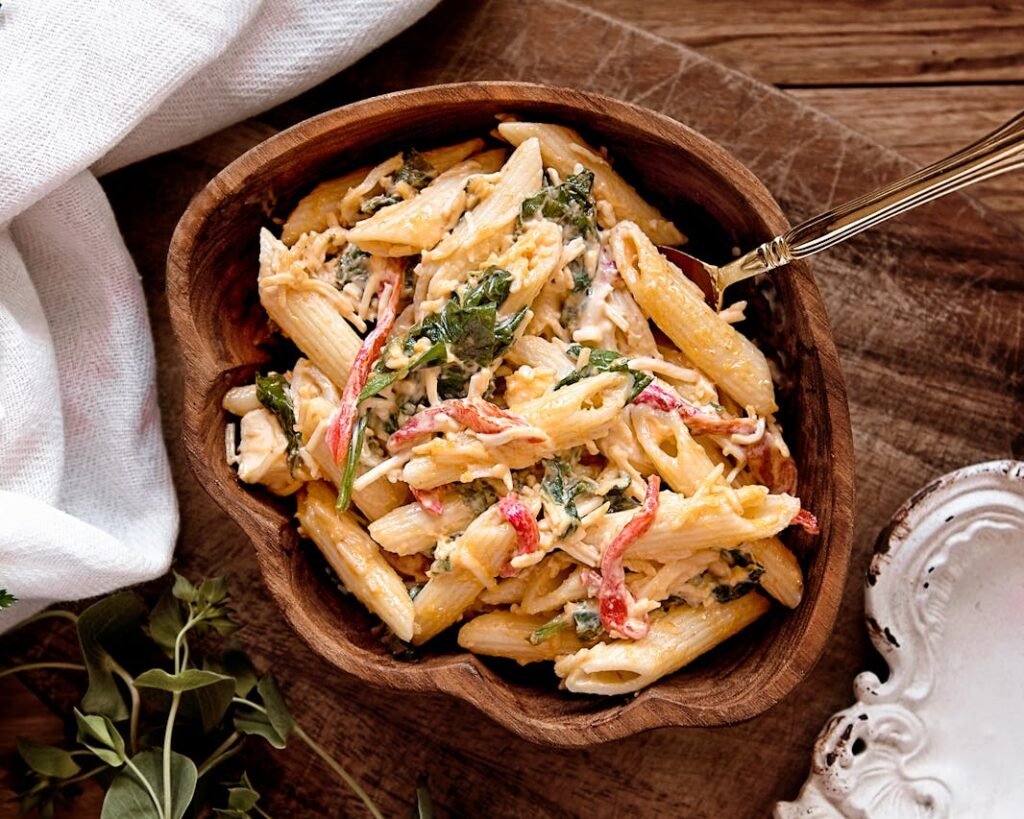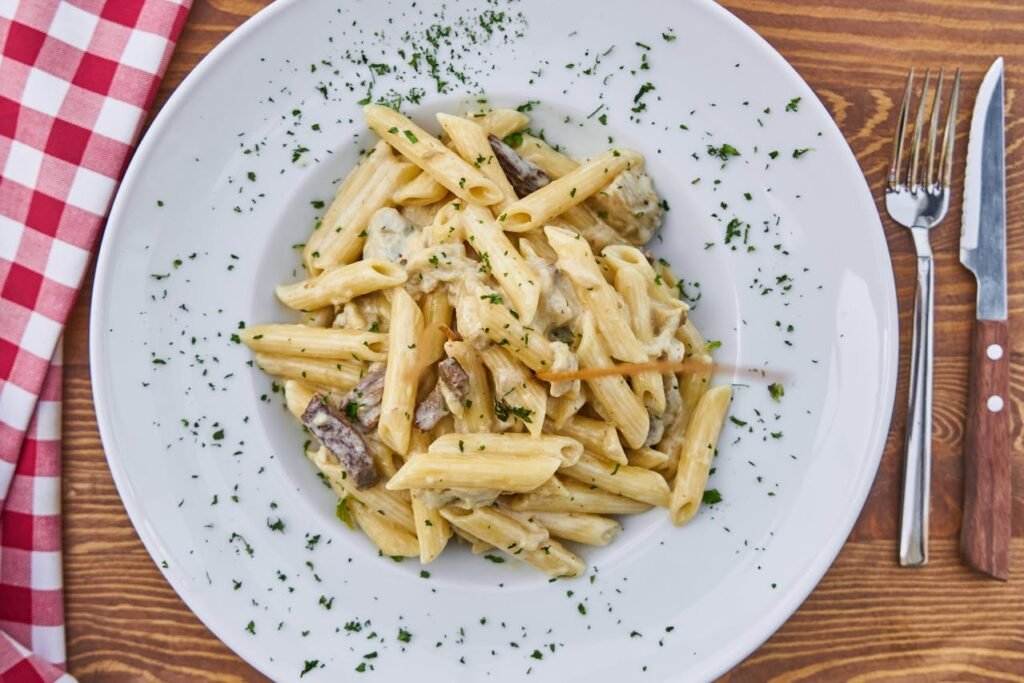Chickpea pasta has turned into a famous decision for those looking for a sans gluten and protein-rich option in contrast to conventional wheat pasta. Produced using chickpea flour (otherwise called gram flour), this pasta offers a nutritious choice without forfeiting taste or surface. I will guide you in this article how to cook chickpea pasta healthy and deliciously.
As of late, the interest for without gluten items has risen, provoking food advancements like chickpea pasta to take care of different dietary necessities. Chickpea pasta stands apart for its interesting characteristics — it’s sans gluten as well as loaded with protein, fiber, and fundamental supplements.
Chickpea pasta is a flexible choice reasonable for people with celiac illness, gluten intolerance, or those basically hoping to integrate more plant-based protein into their eating regimens. Its gentle, nutty flavor supplements different sauces and fixings, making it a magnificent expansion to any feast.
In this far reaching guide, we’ll investigate all that you really want to be familiar with cooking chickpea pasta — from grasping its fixings and planning to cooking methods, serving ideas, and storage tips. Whether you’re new to without gluten cooking or a carefully prepared gourmet expert searching for new culinary thoughts, chickpea pasta is a brilliant material for imagination in the kitchen.
How about we jump into the universe of chickpea pasta and find how to make delightful, natively constructed pasta that is solid, tasty, and fulfilling!
Understanding Chickpea Pasta
Chickpea pasta, frequently alluded to as gram flour pasta, is a kind of pasta produced using chickpea flour, which is gotten from ground dried chickpeas. This flour is normally without gluten, making chickpea pasta a reasonable choice for people with gluten intolerance or those following a without gluten diet.
Ingredients and Nutritional Benefits
The essential fixing in chickpea pasta is chickpea flour, which is wealthy in protein, fiber, and fundamental supplements. This pasta gives a decent wellspring of plant-based protein, making it a magnificent option in contrast to customary wheat-based pasta for veggie lovers and vegetarians.
Chickpea pasta is likewise high in fiber, which upholds stomach related wellbeing and helps keep you feeling full and fulfilled after a dinner. It contains fundamental minerals like potassium, magnesium, and phosphorus, adding to generally wellbeing and prosperity.
Key Features of Chickpea Pasta
- Gluten-Free: Ideal for those with celiac sickness or gluten responsiveness, chickpea pasta offers a protected and delectable option in contrast to wheat-based pasta.
- High Protein Content: Chickpea pasta is a valuable source of plant-based protein, making it suitable for individuals looking to increase their protein intake without consuming animal products.
- Rich in Fiber: The fiber content in chickpea pasta supports digestive health and helps regulate blood sugar levels.
- Nutrient-Dense: Packed with essential minerals and vitamins, chickpea pasta offers a nutritious option for a balanced diet.
Texture and Flavor
Chickpea pasta has a unique texture and flavor compared to traditional wheat pasta. It has a slightly nutty taste and a firm, al dente texture when cooked properly. This pasta holds sauces well and can be used in various pasta dishes, from classic marinara to creamy Alfredo.
Preparing Chickpea Pasta Dough
Making chickpea pasta dough is a straightforward process that requires a few simple ingredients and some basic kitchen tools. Here’s a step-by-step guide on how to prepare chickpea pasta dough at home:
Ingredients You’ll Need:
- 2 cups chickpea flour (gram flour)
- 2 large eggs
- 1 tablespoon olive oil
- Pinch of salt
Mixing the Ingredients
- In a large mixing bowl, combine the chickpea flour and salt.
- Create a well in the center of the flour mixture and crack the eggs into it.
- Add the olive oil to the bowl.
Kneading the Dough
- Use a fork to gradually incorporate the flour into the eggs and olive oil, mixing until a dough begins to form.
- Once the dough starts to come together, use your hands to knead it gently until it becomes smooth and elastic. Add a sprinkle of chickpea flour if the dough is too sticky.
Resting the Dough
- Shape the dough into a ball and wrap it tightly in plastic wrap.
- Allow the dough to rest at room temperature for at least 30 minutes. This resting period helps relax the gluten in the chickpea flour and makes the dough easier to roll out.
Rolling and Cutting the Pasta
Rolling Out the Dough
- After the resting period, unwrap the dough and cut it into smaller manageable pieces.
- Use a rolling pin to flatten each piece of dough into a thin sheet. Aim for a thickness that can be easily passed through a pasta machine.
Using a Pasta Machine
- Set up your pasta machine and adjust it to the widest setting.
- Pass the dough through the machine, gradually reducing the thickness setting with each pass until you achieve the desired thickness for your pasta.
Cutting the Pasta
- Once you have a thin sheet of pasta dough, use the pasta machine’s cutter attachment to cut the dough into your desired pasta shape—such as fettuccine or linguine.
Cooking and Serving Chickpea Pasta
Cooking the Pasta
- Bring a large pot of salted water to a boil.
- Add the fresh chickpea pasta and cook for 3-4 minutes or until al dente.
- Drain the pasta and toss it with your favorite sauce, such as homemade pesto or marinara.
Serving and Enjoying
- Serve the cooked chickpea pasta immediately, garnished with grated Parmesan cheese and fresh herbs if desired.
- Enjoy your homemade chickpea pasta as a nutritious and flavorful meal!
Cooking Chickpea Pasta to Perfection
Cooking chickpea pasta requires a bit of attention to ensure that it turns out perfectly al dente and maintains its texture. Here’s a detailed guide on how to cook chickpea pasta to perfection:
Boiling the Water
- Use a large pot with plenty of water to allow the pasta to cook evenly without sticking together.
- Bring the water to a rolling boil over high heat.
Adding Salt
- Once the water is boiling, add a generous amount of salt. The salted water enhances the flavor of the pasta.
Adding the Pasta
- Carefully add the chickpea pasta to the boiling water, gently stirring to prevent the strands from clumping together.
- Ensure that the pasta is fully submerged in the water for even cooking.
Stirring Occasionally
- During the cooking process, stir the pasta occasionally with a wooden spoon to prevent sticking.
- Chickpea pasta can cook quickly, so keep an eye on it to avoid overcooking.
Testing for Doneness
- After about 3-4 minutes of cooking, start testing the pasta for doneness.
- Remove a strand of pasta with tongs or a slotted spoon and taste it to check the texture. The pasta should be tender yet slightly firm (al dente).
Draining the Pasta
- Once the pasta is cooked to perfection, carefully drain it in a colander.
- Reserve a small amount of the pasta cooking water to use in your sauce if needed.
Rinsing (Optional)
- Some prefer to rinse the chickpea pasta under cold water to stop the cooking process and prevent sticking.
- However, rinsing is optional and may wash away some of the pasta’s starch, which can help sauce adhere better.
Serving the Pasta
- Transfer the drained chickpea pasta to a serving bowl or individual plates.
- Toss the pasta with your favorite sauce, such as a creamy garlic sauce, marinara, or olive oil with herbs.
Garnishing and Enjoying
- Garnish the chickpea pasta with freshly grated Parmesan cheese, chopped fresh herbs, or a drizzle of extra-virgin olive oil.
- Serve immediately and enjoy your delicious and nutritious chickpea pasta dish!
Tips for Serving and Enjoying Chickpea Pasta
Chickpea pasta is versatile and can be enjoyed in various ways. Here are some helpful tips for serving and enjoying your chickpea pasta dish:
Pairing with Sauces
Chickpea pasta pairs well with a variety of sauces, enhancing its flavor and texture. Consider these sauce options:
- Creamy Garlic Sauce: Create a rich and creamy garlic sauce with cashews or coconut milk for a dairy-free option.
- Marinara Sauce: Classic marinara sauce made with tomatoes, garlic, and herbs complements chickpea pasta beautifully.
- Pesto Sauce: Fresh basil pesto adds a burst of flavor to chickpea pasta, providing a vibrant green color and aromatic taste.
- Olive Oil and Herbs: For a lighter option, toss chickpea pasta with extra-virgin olive oil, chopped herbs, and a sprinkle of Parmesan cheese.
Adding Protein
Enhance the nutritional profile of your chickpea pasta dish by adding protein-rich ingredients:
- Grilled Chicken: Top your chickpea pasta with grilled or roasted chicken for a satisfying meal.
- Sauteed Shrimp: Toss chickpea pasta with sauteed shrimp and cherry tomatoes for a seafood twist.
- Baked Tofu: Crispy baked tofu cubes can add a delightful texture and plant-based protein to chickpea pasta.
Incorporating Vegetables
Boost the fiber and nutrient content of your chickpea pasta dish with colorful vegetables:
- Roasted Vegetables: Mix in roasted bell peppers, zucchini, and eggplant for a hearty and flavorful pasta dish.
- Spinach or Kale: Add fresh spinach or kale leaves to the pasta during the final minutes of cooking for a nutritious boost.
- Cherry Tomatoes: Halved cherry tomatoes add sweetness and acidity to chickpea pasta.
Garnishing and Serving
Elevate the presentation of your chickpea pasta dish with these garnishing and serving ideas:
- Fresh Herbs: Sprinkle chopped fresh basil, parsley, or oregano over the pasta for a pop of color and freshness.
- Red Pepper Flakes: For a touch of heat, add red pepper flakes to individual servings according to taste.
- Lemon Zest: Finely grated lemon zest can brighten up the flavors of chickpea pasta.
Accompaniments
Serve chickpea pasta with these delightful accompaniments for a complete meal:
- Crusty Bread: Enjoy chickpea pasta with slices of crusty Italian bread for a satisfying meal.
- Side Salad: Serve alongside a crisp green salad dressed with balsamic vinaigrette for added freshness.
- Wine Pairing: Consider pairing your chickpea pasta dish with a light white wine or rosé for a delightful dining experience.
Storing and Reheating Chickpea Pasta
Properly storing and reheating chickpea pasta can help maintain its texture and flavor for later enjoyment. Follow these tips for storing and reheating your leftover chickpea pasta:
Storage Tips
- Refrigeration: Allow leftover chickpea pasta to cool completely before transferring it to an airtight container. Store in the refrigerator for up to 3-4 days.
- Freezing: For longer storage, portion cooled chickpea pasta into freezer-safe bags or containers. Label with the date and store in the freezer for up to 1 month.
Reheating Instructions
- Stovetop Method: To reheat refrigerated chickpea pasta, place it in a skillet with a splash of water or sauce. Heat gently over medium-low heat, stirring occasionally until warmed through.
- Microwave Method: Transfer a single serving of chickpea pasta to a microwave-safe dish. Cover loosely with a damp paper towel to prevent drying out and microwave in 30-second intervals until heated to your liking.
- Oven Method: For larger portions, preheat the oven to 350°F (175°C). Place chickpea pasta in an oven-safe dish, cover with foil, and bake for 15-20 minutes or until heated through.
Tips for Best Results
- Add Moisture: Chickpea pasta can dry out when reheated. Adding a splash of water, broth, or sauce while reheating can help restore moisture.
- Stir Frequently: Stir the pasta regularly during reheating to ensure even distribution of heat and prevent sticking.
- Check for Doneness: Taste a small portion to ensure the pasta is heated evenly throughout before serving.
Enjoying Leftover Chickpea Pasta
- Quick Pasta Salad: Toss chilled chickpea pasta with fresh vegetables, herbs, and a light vinaigrette to create a refreshing pasta salad.
- Pasta Bake: Layer reheated chickpea pasta with marinara sauce, cheese, and vegetables for a delicious pasta bake.
- Stir-Fry: Use reheated chickpea pasta as a base for a quick stir-fry with mixed vegetables and protein of your choice.
Conclusion: How to Cook Chickpea Pasta
In conclusion, chickpea pasta offers a nutritious, gluten-free alternative to traditional pasta, making it a versatile and enjoyable option for individuals with dietary preferences or restrictions. By incorporating chickpea pasta into your cooking repertoire, you can explore a variety of delicious dishes while reaping the health benefits of chickpeas.
Whether you’re seeking a convenient weeknight meal, a nutritious lunch option, or a special dish for entertaining, chickpea pasta can be customized to suit your tastes and dietary needs. Experiment with different sauces, vegetables, and proteins to create unique and satisfying meals that everyone will enjoy.
By following the tips and techniques outlined in this guide, you can master the art of cooking chickpea pasta and elevate your culinary skills. Remember to choose high-quality chickpea pasta brands or consider making your own fresh chickpea pasta for an authentic and wholesome experience.
So, why not give chickpea pasta a try? Discover the endless possibilities and embrace the goodness of chickpeas in a delicious pasta format. Whether you’re a seasoned chef or a home cook looking to expand your culinary horizons, chickpea pasta is a worthy addition to your kitchen pantry.
We hope this comprehensive guide has inspired you to explore the world of chickpea pasta and incorporate it into your cooking routine. Enjoy the process of cooking with chickpea pasta and savor the delightful flavors and textures it brings to your table.
Read More: How To Cook Angel Hair Pasta
FAQs
Bring a large pot of salted water to a boil.
Add chickpea pasta and stir to prevent sticking.
Cook for about 7-9 minutes or until al dente.
Drain and rinse briefly with warm water.
Yes, rinse chickpea pasta briefly after cooking to remove excess starch and prevent clumping.
Boil water with salt in a pot.
Add Banza pasta and stir occasionally.
Cook for 7-9 minutes until firm but tender.
Drain and rinse with warm water.
Chickpea pasta generally cooks in about the same time as regular pasta, approximately 7-9 minutes.

